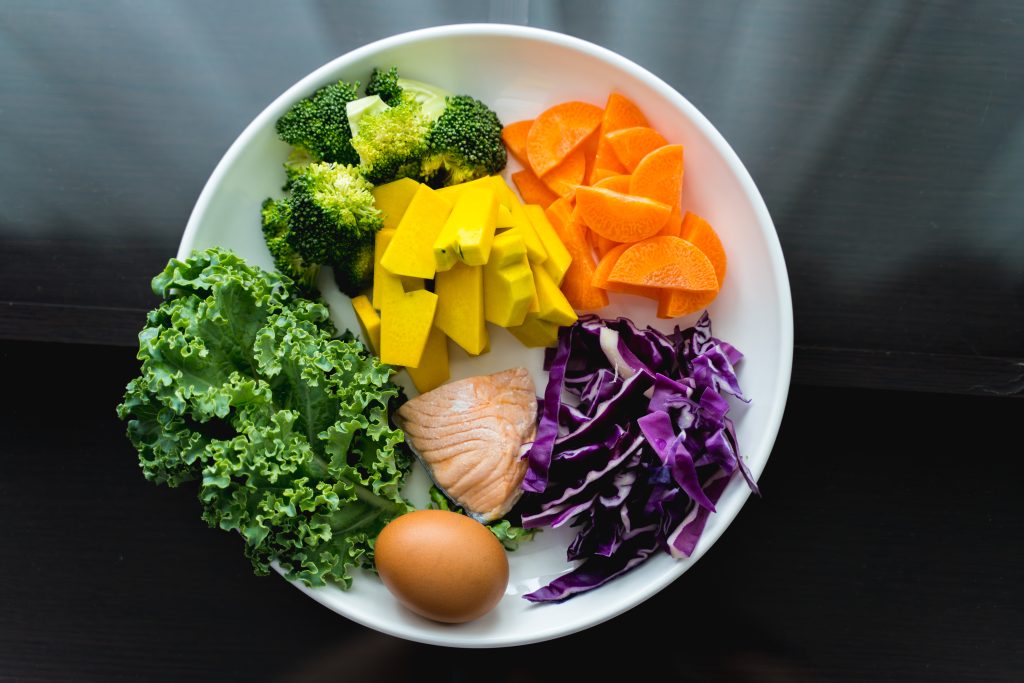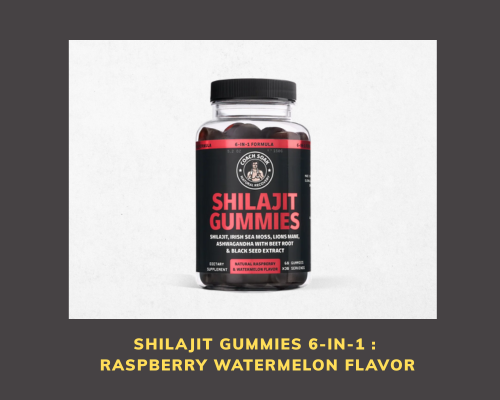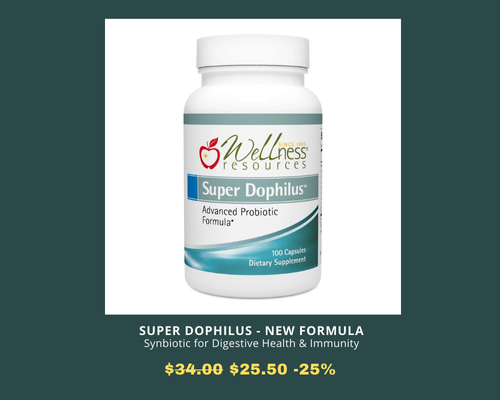Healthy eating is more than just a cliché – it’s a powerful tool for improving your weight, protecting against chronic diseases, and even boosting your mood and brain function. Whether you’re a fitness enthusiast, health professional, or simply someone looking to feel better, the food choices you make every day can have a profound impact on your well-being. In this article, we’ll explore how proper nutrition helps with weight management, guards against heart disease, diabetes, and cancer, and supports mental health. We’ll blend motivational tips with scientific evidence, so you’ll not only understand why healthy eating matters but also feel empowered to act on it.
Weight Management: Balanced Nutrition for a Healthy Weight
Balanced meals: A healthy plate includes plenty of vegetables, some whole grains, and lean protein, with healthy fats in moderation. This balance of macronutrients cedars-sinai.org (carbohydrates, proteins, and fats) helps control calories and keeps you full and nourished
In fact, each macronutrient plays a unique role: carbohydrates provide energy, protein rebuilds and repairs tissues, and fat supports hormone health and helps you absorb vitamins
“You want your diet to have a balance of carbs, fat, and protein,” advises registered dietitian Albert Abayev
Striking the right balance can prevent extreme hunger and cravings, making it easier to maintain a healthy weight.
Portion control is another cornerstone of weight management. Even healthy food can lead to weight gain if we consistently eat more than our body needs. Large portion sizes have been shown to cause “substantial increases in energy intake,” which over time may contribute to obesity pmc.ncbi.nlm.nih.gov
In other words, when we’re served more, we tend to eat more – often without realizing it. Research led by Dr. Barbara Rolls has found that using strategies like smaller plates or pre-portioned meals can help people eat appropriate amounts and lose weight
Rather than simply telling yourself to eat less of everything, a smarter approach is to fill up on low-calorie, nutrient-dense foods like vegetables, fruits, and salads. These foods have a low “energy density,” so you can eat satisfying portions for fewer calories
By replacing high-calorie items with voluminous, healthy foods, you won’t feel hungry or deprived while managing your weight.
Metabolism matters too. Your metabolism is the process by which your body converts food into energy, and it runs 24/7 to fuel things like your heartbeat, breathing, and cell repair. While genetics play a part in metabolic rate, nutrition and body composition are key influencers. Muscle tissue burns more calories at rest than fat tissue, so maintaining muscle through proper diet and exercise can boost your basal metabolic rate
Protein-rich foods are especially helpful here: they provide the building blocks (amino acids) for muscle, and they also have a high thermic effect (meaning your body burns more calories digesting protein compared to fat or carbs). By including lean proteins (fish, poultry, beans, etc.) at each meal and doing strength-building activities, you support a metabolism that works in your favor. Pro Tip: Instead of drastic diets that might slow your metabolism focus on consistent, balanced meals. As one expert puts it, “Ideally for weight loss, you want to have consistent meals throughout the day that focus on all three macronutrients per meal” mayoclinic.org
Regular, nourishing meals teach your body that food is plentiful and keep your metabolism steady.
Practical weight-management tips: To put this into action, try a few simple strategies in your daily routine:
- Mindful portions: Serve yourself on a smaller plate or bowl to naturally limit portions. Take your time when eating, and listen to your hunger and fullness cues. Challenge: For one week, try leaving just a few bites uneaten if you feel full – you’ll learn that it’s okay not to clean your plate.
- Balance your plate: Aim to fill half your plate with vegetables, one-quarter with lean protein, and one-quarter with whole grains. This visual helps ensure you’re getting fiber and protein for fullness, with a controlled amount of higher-calorie starches. Keep added fats small – about a thumb-size of oil or a few nuts can go a long way.
- Smart snacking: Rather than reaching for chips or sweets, plan snacks that combine protein and fiber (e.g. an apple with a handful of almonds, or carrot sticks with hummus). These nutrients work together to keep you satisfied.
- Stay hydrated: Sometimes thirst is mistaken for hunger. Drinking water throughout the day (and choosing water over sugary drinks) can prevent overeating and also supports your metabolism.
By mastering macronutrient balance and portion control, you give your body the fuel it needs without excess. Over time, these habits make it easier to shed excess pounds or maintain a healthy weight – and, importantly, to do so in a sustainable way. The goal is not a short-term “diet,” but a sustainable pattern of eating that keeps you feeling energized and satisfied. Remember, a healthy weight isn’t just about looking a certain way; it’s about feeling your best and reducing health risks. And healthy eating is the foundation to get you there.
Disease Prevention: Eating Well to Fight Chronic Diseases
A nutritious diet doesn’t just help you look and feel good in the present – it’s an investment in your long-term health. Experts agree that healthy eating is one of the most powerful tools we have to prevent chronic diseases like heart disease, type 2 diabetes, and certain cancers. In fact, many of these diseases are considered “lifestyle diseases,” meaning our daily habits (especially diet and activity) strongly influence our risk. The exciting truth: By improving your eating habits, you can add years to your life and life to your years. Let’s look at how healthy eating protects you from the big three chronic diseases:
Heart Disease
Heart disease remains the number one cause of death worldwide, but a heart-healthy diet can dramatically lower your risk. The best diet for your heart is one rich in whole plant foods and healthy fats, and low in processed junk. A large body of research shows that eating plenty of fruits, vegetables, whole grains, nuts, and fish – while going easy on sugar, salt, and red meat – helps keep your heart and blood vessels in top shape. For example, people who eat in line with this kind of pattern have been found to have 31% lower risk of heart disease, plus a lower risk of stroke nutritionsource.hsph.harvard.edu
One landmark study even demonstrated that a Mediterranean diet (which includes lots of olive oil, nuts, veggies, and fish) significantly reduced the incidence of major cardiovascular events in high-risk individuals
In that study, participants who added extra-virgin olive oil or nuts to a Mediterranean-style eating plan had fewer heart attacks and strokes than those told to follow a low-fat diet
This reinforces an important point: the type of fat matters. Replacing saturated and trans fats (found in butter, fatty meats, and fried foods) with unsaturated fats from olive oil, avocados, nuts, and fish can improve cholesterol levels and reduce heart risk nutritionsource.hsph.harvard.edu
Beyond fats, focus on fiber and quality carbs. Soluble fiber (found in oats, beans, and fruits) helps lower LDL “bad” cholesterol. Whole grains and vegetables help maintain healthy blood pressure and blood sugar, which in turn protects your arteries. Conversely, refined carbs and sugary foods can lead to blood sugar spikes and contribute to weight gain, both of which strain the heart. Reducing salt (sodium) and increasing potassium in your diet can also keep your blood pressure in check – a Harvard review notes that eating less salty foods and more potassium-rich foods may significantly lower cardiovascular risk
In practice, that means cutting back on packaged snacks, fast food, and processed meats (major sources of hidden salt), while enjoying plenty of produce (bananas, leafy greens, and beans are all high in potassium).
Call to action: Take a heart-healthy step today by adding an extra serving of a fruit or vegetable to one of your meals. Swap a soda for water or unsweetened tea. Little changes, done consistently, pay off. As the Harvard T.H. Chan School of Public Health points out, people with the highest diet quality scores (meaning they eat more healthy foods and fewer unhealthy ones) not only have lower heart disease risk but also lower overall mortality ahajournals.org
Your heart will thank you for every healthy choice you make!
Type 2 Diabetes
Type 2 diabetes is another chronic condition that has a strong link with diet and weight. The good news is that it’s largely preventable – and even if you have prediabetes, it’s often reversible with lifestyle changes. About 9 in 10 cases of type 2 diabetes can be avoided by sensible habits, especially maintaining a healthy weight, eating a balanced diet, staying active, and not smoking
Excess body fat (particularly around the waist) drives insulin resistance, which is the hallmark of type 2 diabetes. By eating nutritiously and keeping your weight in check, you greatly reduce that risk. In fact, the U.S. CDC notes that if someone has prediabetes, losing 5-7% of their body weight through healthy eating and exercise can cut their risk of developing diabetes by 58%
That’s an enormous reduction – more effective, in fact, than most medications.
So what does an anti-diabetes diet look like? In many ways, it mirrors the same healthy pattern we discuss for heart health. Emphasize high-fiber carbohydrates like whole grains, beans, and vegetables, which help steady blood sugar levels. Minimize foods that cause blood sugar to spike – sugary drinks, sweets, and refined grains (white bread, white rice). Long-term studies show that individuals who choose whole grains over refined grains have a significantly lower risk of diabetes; for example, women eating 2-3 servings of whole grains a day were 30% less likely to develop type 2 diabetes compared to those eating almost none
Whole grains and fibers slow down digestion, leading to gentler rises in blood sugar and insulin
This puts less stress on the pancreas (which produces insulin) and helps prevent the progression of diabetes
On the other hand, diets heavy in rapidly absorbed sugars and starches can overwork the body’s insulin response. One striking statistic: in the Nurses’ Health Study, just one sugary drink per day was associated with an 83% higher risk of type 2 diabetes in women
The message is clear – choose water, tea, or coffee over sugary beverages when possible, and save desserts for occasional treats.
Healthy eating also helps even if you already have diabetes. It can improve blood sugar control and prevent complications. But from a prevention standpoint, the earlier you adopt good habits, the better. If diabetes runs in your family, or if you’ve been told you have prediabetes, consider this a motivating wake-up call. Pro Tip: Start by making small swaps – for example, trade a refined breakfast cereal for oatmeal topped with fruit and nuts, or swap some of the white rice on your plate for broccoli or spinach. These little changes cut down the glycemic load of your meals and nourish your body. And remember, weight loss – even a modest 5-10% of your body weight – can have a powerful effect on reducing diabetes risk
Every pound lost through healthy eating and exercise is a victory for your health.
Cancer
You might not immediately connect your dinner plate with cancer risk, but nutrition plays a notable role here as well. While cancer is a complex disease with many causes (including genetics and environmental factors), diet and body weight are significant pieces of the puzzle. The World Cancer Research Fund and American Cancer Society estimate that a substantial proportion of cancers could be prevented through lifestyle changes, including diet. How does healthy eating help? For one, it helps you avoid obesity – and obesity is linked to at least 13 types of cancer
including common ones like breast (post-menopausal), colorectal, kidney, and pancreatic cancers. By keeping your weight in a healthy range through diet and exercise, you remove one of the major risk factors for these cancers
Beyond weight, certain foods can directly influence cancer risk. Protective foods include fruits, vegetables, and whole grains – basically, plant foods that are rich in fiber, vitamins, antioxidants, and phytochemicals. These components can help protect cells from damage, support your immune system, and reduce inflammation, all of which contribute to cancer prevention. For example, a diet high in fiber (from whole grains, beans, veggies and fruits) is associated with a lower risk of colorectal cancer
Fiber helps move waste through the digestive tract and nourishes beneficial gut bacteria, which may produce substances that protect colon cells. On the flip side, processed and red meats are linked to a higher risk of colon and bowel cancer
The science here is strong enough that the World Health Organization classifies processed meats (like bacon, sausage, deli meats) as a known carcinogen (cancer-causing agent) for colorectal cancer. That doesn’t mean a single hot dog will cause cancer, but habitually eating a lot of processed or red meat likely raises your long-term risk
Moderation and balance are key – if you include meat, consider it a side dish rather than the star of your meal, and focus more on plant proteins (like beans, lentils) and fish or poultry.
Another factor is alcohol, which is actually a part of diet too. Alcoholic drinks increase the risk of several cancers (including breast, liver, mouth, and throat cancers), so limiting alcohol is a wise choice for prevention
If you do drink, try to stay within recommended limits (no more than one drink per day for women, two for men) – or less, since no amount of alcohol is considered completely risk-free in terms of cancer.
Finally, antioxidants found in colorful fruits and vegetables (think berries, leafy greens, turmeric, etc.) help combat oxidative stress in the body. Oxidative stress can damage DNA and initiate cancerous changes, so having a robust intake of antioxidant-rich foods is like having a strong defense team to neutralize those threats. While vitamin supplements haven’t shown the same benefit (and in some cases high-dose supplements can be harmful), getting these compounds from real food is associated with better outcomes. For instance, diets abundant in carotenoid-rich vegetables (carrots, sweet potatoes, spinach) have been linked to lower risk of certain cancers, such as lung or breast cancer
In summary, your overall dietary pattern is what matters most for cancer prevention. As Cancer Research UK puts it: yes, eating a healthy and balanced diet can reduce the risk of cancer, largely by helping you maintain a healthy weight and by providing nutrients that protect your cells
Your best strategy is to eat plenty of whole plant foods, limit processed and high-fat foods, and keep red/processed meats and alcohol to a minimum. These habits not only reduce cancer risk but also overlap with benefits for heart and metabolic health – a win-win for your whole body.
Call to action: If you’re feeling overwhelmed, start simple. Next grocery trip, make a point to load up your cart with a new vegetable or fruit you don’t normally buy. Experiment with “Meatless Mondays” by trying a bean chili or tofu stir-fry instead of a meat-based dish. Small shifts in your diet today stack up to big health rewards over time. You have more control than you might think when it comes to preventing diseases, and it can start with the choices on your plate.
Mental Health Benefits: Nutrition for Your Mood and Mind
We often focus on the physical benefits of healthy eating, but did you know that your diet deeply affects your mental health and brain function? There’s a growing field of “nutritional psychiatry” devoted to studying how what we eat influences our mood, emotions, and cognitive abilities. Simply put, the brain is an energy-hungry organ – it uses about 20% of our daily calories – and it functions best when fueled by high-quality foods. Think of your brain as a luxury car: it will run smoothly on premium fuel, but sputter if you give it the wrong gas
The vitamins, minerals, antioxidants, and healthy fats in nutritious foods literally feed your brain, protect it from oxidative stress, and reduce inflammation. On the other hand, diets high in ultra-processed foods and refined sugars can impair brain function and even contribute to mood disorders like depression and anxiety
One eye-opening finding: Multiple studies have found a correlation between a diet high in refined sugars and impaired brain function, with worsening of symptoms of mood disorders such as depression
Have you ever felt irritable or foggy after a junk food binge? Those swings in blood sugar and the pro-inflammatory effects of poor diet may be to blame. High-sugar, high-fat processed foods can cause inflammation not just in your body but also in your brain, potentially affecting neurotransmitters (brain chemicals) that regulate mood. In contrast, a balanced diet with whole foods provides steady energy and the nutrients your brain needs to make happy hormones like serotonin.
Speaking of serotonin – this crucial neurotransmitter helps regulate mood, sleep, and appetite, and guess what? About 95% of your body’s serotonin is produced in your gut, not your brain
This astonishing fact underlies the importance of the gut-brain connection. The gut is often called our “second brain” because it’s lined with millions of neurons and home to trillions of bacteria that communicate with the brain. “When most people think about mental health, they only think about the brain, but there is bi-directional communication between the gut and brain,” explains Dr. Arpana Gupta, a neuroscientist at UCLA
In other words, the food you digest influences your gut bacteria and intestinal health, which sends signals up to your brain and can sway your mood and even behavior
Healthy foods (like fiber-rich veggies, fruits, yogurt with probiotics, fermented foods like kefir or sauerkraut) encourage a diverse and beneficial gut microbiome. These “good” microbes produce substances that reduce inflammation and create neurotransmitters. “Serotonin is one of those neurotransmitters associated with mental health, and it’s produced by good bacteria. Up to 95% of serotonin is produced in the gut, so we have to eat healthy foods to increase the presence of these good bacteria,” Dr. Gupta notes
In short, feeding your gut well feeds your brain with mood-lifting chemicals.
The impact of diet on mental well-being is not just theoretical. Clinical studies are now showing that dietary improvements can actually help treat depression. A 2024 analysis of multiple randomized controlled trials found that participants with depression who were instructed to follow a Mediterranean-style diet (high in vegetables, fruits, whole grains, legumes, fish, and olive oil) had greater improvements in their symptoms than those who continued eating a typical diet
This doesn’t mean food replaces medications or therapy, but it’s a powerful adjunct: eating better makes you feel better psychologically, which then gives you more energy and motivation to keep up other healthy habits. It’s a positive cycle. Even for people without a diagnosed condition, many report more stable moods and sharper focus when they clean up their diets. Imagine fewer afternoon slumps, less brain fog, and a generally more optimistic outlook – nutrition is a contributing factor in all of those.
So, what are some brain-friendly foods you can incorporate? Here are a few all-stars:
- Omega-3 fatty acids: Found in fatty fish (salmon, sardines), flaxseeds, and walnuts. Omega-3s are a major component of brain cell membranes and have anti-inflammatory effects. They’ve been linked to lower rates of depression and improved cognitive function.
- B vitamins: Especially folate, B6, and B12, which you get from leafy greens, whole grains, eggs, and lean meats. These vitamins help in the production of neurotransmitters like serotonin and dopamine. A deficiency in certain B vitamins can lead to fatigue, irritability, and poor concentration.
- Antioxidant-rich fruits and veggies: Berries, citrus, kale, broccoli – all these are high in antioxidants like vitamin C, vitamin E, and flavonoids. Antioxidants protect brain cells from oxidative stress and may help preserve cognitive function as you age. Blueberries, for example, have been nicknamed “brain berries” because some research links them to better memory.
- Fermented foods: Yogurt with live cultures, kefir, kimchi, or kombucha. These contain probiotics that can help populate your gut with beneficial bacteria, supporting that gut-brain axis for better mood regulation.
- Protein and healthy fats: Don’t fear healthy fats – your brain is about 60% fat by dry weight, and it needs fats (like those from avocados, olive oil, nuts) for structure and function. Protein provides amino acids like tryptophan, which is a precursor to serotonin (ever wonder why a turkey dinner might make you feel calm and sleepy? That’s tryptophan at work!).
As you can see, the same diet that helps your heart and waistline also tends to help your mind and mood. There’s synergy: a diet that’s anti-inflammatory and nutrient-dense supports every system in your body, including the brain. Conversely, when you nourish your mental health through food, you’re likely also eating in a way that prevents chronic physical diseases. It’s all connected!
Motivation boost: If you’ve been struggling with mood swings or low energy, try improving your diet for a couple of weeks and note the changes. Keep a journal of how you feel each day. Many people are surprised at how much more clear-headed and emotionally balanced they feel when they cut out the ultra-processed “junk” and add in more wholesome options. Remember, food is not a substitute for professional mental health care, but it can be a valuable self-care strategy. As the saying goes, “you are what you eat” – so fuel yourself with foods that empower you to be the happiest, most resilient version of you.
Bringing It All Together: Your Health, Your Choice
We’ve covered a lot of ground – from managing weight to preventing life-threatening diseases to brightening your mood – and the common thread through it all is healthy eating. The science is clear and compelling, but now it’s up to you to put this knowledge into practice. And here’s the encouraging part: you don’t have to be perfect. All-or-nothing thinking is the enemy of lasting change. Instead, aim for progress, one meal at a time. Every time you choose a home-cooked dinner over fast food, add an extra veggie to your plate, or swap chips for a handful of nuts, you’re casting a vote for a healthier you. Over time, these votes accumulate into habits, and those habits become your new lifestyle.
If you’re feeling inspired but also a bit unsure where to start, consider this simple action plan:
- Set one achievable goal for this week. Make it specific. For example: “I will eat at least two different vegetables each day” or “I will switch to whole-grain bread instead of white.” Write it down or tell a friend for accountability.
- Plan and prepare. Healthy eating is easiest when you’ve got healthy options at your fingertips. Maybe meal-prep some lunches, stock up on fruits for snacks, or prepare cut veggies to grab instead of reaching for crackers.
- Practice mindful eating. Slow down and truly taste your food. This not only helps prevent overeating, but it increases your enjoyment and appreciation of healthy foods. Remember why you’re doing this – as fuel and nourishment, not just calories.
- Build a support system. Involve family or friends in your healthy changes. Join a community (even an online forum or local group) focused on nutrition or healthy recipes. Share your successes and challenges – you might be surprised how many people are on the same journey.
- Celebrate small wins. Did you choose a salad instead of fries? Awesome! Did you notice you had more energy today because you ate a balanced breakfast? That’s worth celebrating. Positive reinforcement will keep you motivated.
Finally, keep in mind that healthy eating is not a punishment or a chore – it’s truly an act of self-love and empowerment. You’re giving yourself the gift of better health, one bite at a time. As you feel the benefits – the looser fit of your clothes, the improved lab results at your doctor’s visit, the pep in your step, or the brighter mood each morning – take pride in knowing you made that happen with your choices. And if you slip up (we’re all human!), don’t throw in the towel. Every meal is a new opportunity to do something good for yourself.
In conclusion, proper nutrition is a powerful ally for managing your weight, shielding yourself from diseases, and uplifting your mental well-being. It’s a field where science and daily life meet: the research gives us the “why,” and our everyday meals are the “how.” Equipped with both motivation and credible knowledge, you can move forward confidently on your healthy eating journey. Your future self – with a strong heart, vibrant health, and clear mind – will thank you for the choices you make today. So, next time you’re in the kitchen or grocery store, take a moment to remember: every healthy choice is an investment in a longer, happier life. Now go ahead and savor the goodness of nutritious food – your body and brain are cheering you on!
References:
- Rolls BJ. What is the role of portion control in weight management? Int J Obes (Lond). 2014;38(Suppl 1):S1-S8. PMID: 25033958.
Cedars-Sinai – Know Your Macros: Why Macronutrients Are Key to Healthy Eating.
- Mayo Clinic Staff. Metabolism and weight loss: How you burn calories. MayoClinic.org.
- Harvard T.H. Chan School of Public Health – The Nutrition Source: Preventing Heart Disease.
nutritionsource.hsph.harvard.edu
Harvard T.H. Chan School of Public Health – The Nutrition Source: Simple Steps to Preventing Diabetes.












